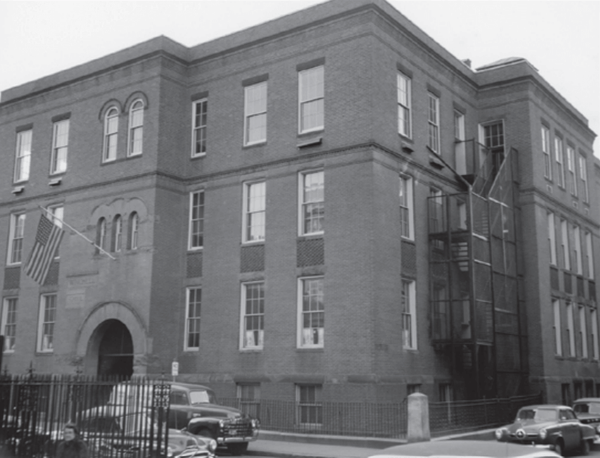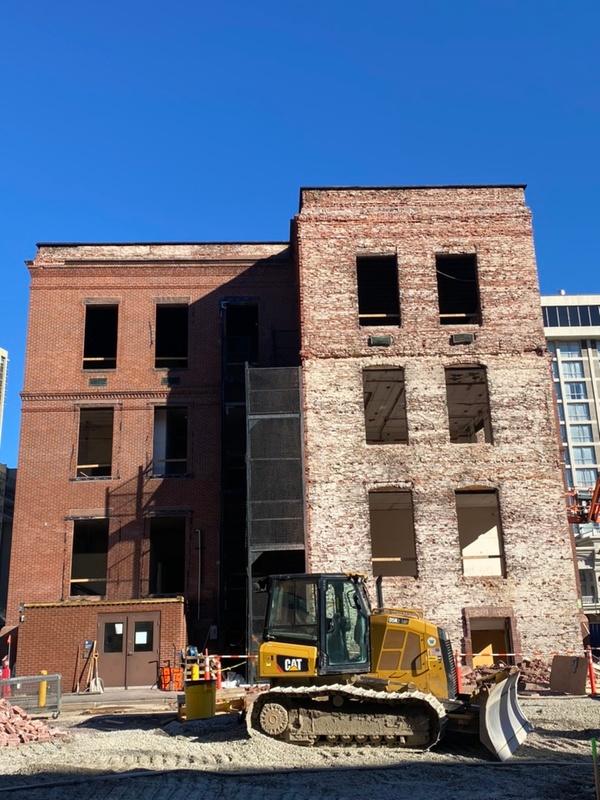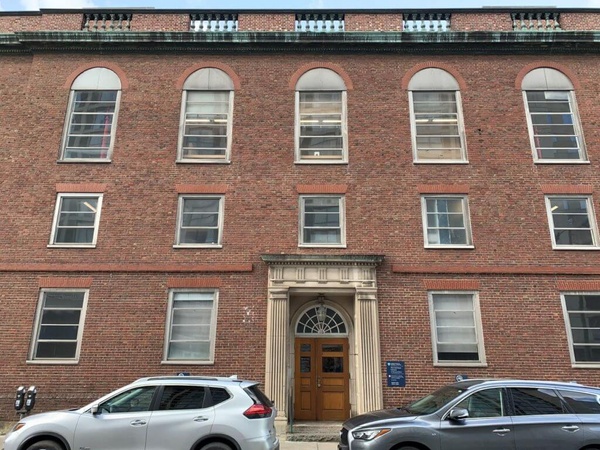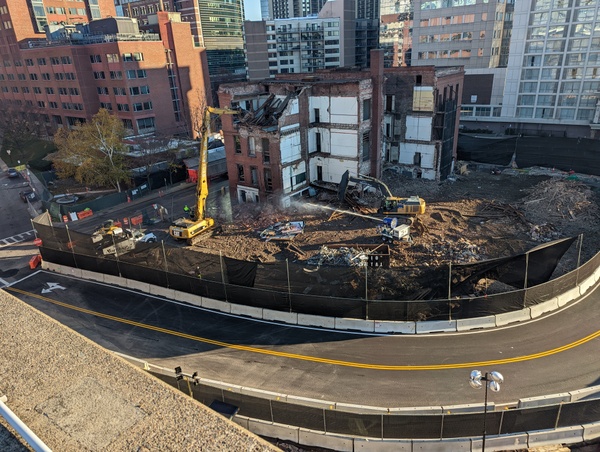Historic background included below.
BOSTON – The West End Museum, a 19-year-old institution founded after the mid-20th-century demolition of one of the oldest Boston neighborhoods under Urban Renewal, has received a grant from Massachusetts General Hospital, supporting the museum’s transition from an active volunteer institution to a museum with paid professional staff and ensuring the museum’s ability to inform current and future generations about the West End’s rich heritage.
Located on Lomasney Way near Staniford and Causeway streets, the West End Museum is dedicated to the collection, preservation and interpretation of the history and culture of the West End of Boston and the neighborhood’s contribution to the city and region.
As part of a multi-part package of contributions to West End neighborhood organizations and institutions, under the auspices of the Boston Planning and Development Agency, Massachusetts General Hospital is contributing tens of millions of dollars with the final approval of its plan to build two new medical buildings on property it owns adjacent to its main campus on Cambridge Street.
The hospital’s contribution helps ensure that the West End’s history will be stewarded and its stories told for many generations to come.
“We are extremely grateful to the West End Museum for its continued efforts to preserve the West End’s rich history, and with this endowment we are excited to support, collaborate and enhance its efforts for years to come,” said David F. M. Brown, MD, President of Massachusetts General Hospital. “The future of patient-centered health care is deeply rooted within the communities we serve, and the new building represents the next generation of research-infused care, clinical excellence, commitment to education, and global health care leadership.”
The contribution was announced on March 15, 2023, at the museum’s annual celebration honoring individuals who have made meaningful and lasting contributions to the neighborhood and the city of Boston. The annual Heritage Celebration posthumously honored Charles Bulfinch, Dr. Ronald Tompkins, and Thomas Maguire.
In connection with the development project at Massachusetts General Hospital, three of the few remaining original buildings from the old West End neighborhood have had to be demolished.
“MGH’s project is an important benefit to us and the community, and we are grateful that the hospital chose to work closely with community leaders in the West End and Beacon Hill to ensure that the memory of the West End will endure,” said Sebastian Belfanti, Executive Director at the West End Museum. “Watching the demolition of the West End House and Winchell School is painful, but we at the Museum will continue to dedicate ourselves to making sure the stories of the community that used those buildings are not lost.”
The West End Museum is receiving $3.65 million from Mass General Brigham, including a $1 million endowment, $2.5 million in gradual funds to support staff and operations, and $150,000 to be used to install an exhibit at Mass General after the new buildings are completed. The Museum is also becoming the custodian for various artifacts from the historic Winchell School, one of the three buildings being demolished, including blackboards, bookcases, flooring, and doors, along with bricks from the West End House and the Winchell School.
The package of contributions from Mass General Hospital to the West End Museum and other local groups was negotiated and facilitated by Boston City Councilor Kenzie Bok and State Rep. Jay Livingston over more than a year.
“The story of the West End is the immigrant story of Boston, and the West End Museum is an essential repository of that history,” said Bok. “Mass General is an institution that has been rooted in the West End for its entire existence, and so it means a lot that they are stepping up to partner with the West End Museum for the long-term with this transformative grant to save and promote the neighborhood’s history.”
Also under the agreement, Mass General will have ex-officio representation on the West End Museum Board of Directors, which now has 15 members. Mass General Hospital is a founding member of Mass General Brigham.
“I am looking forward to seeing the outcome of this grant and the benefit that it will have on the West End Community for generations to come,” said Livingstone. “I have also appreciated MGH's community-centered approach, which included working closely with stakeholders and community members to ensure that West Enders' voices remained centered throughout this project.”
The blocks along north Cambridge Street, where Mass General Hospital is located, were part of the West End before Urban Renewal eliminated the 30 streets and 50 acres that constituted that neighborhood in the 1950s and 1960. They were replaced with luxury high-rise apartments and other buildings during the period when nearby old Scollay Square was eliminated to make way for the Government Center complex.
“A lot of people sent to the West End House and the Winchell School and had happy memories of them,” said Jim Campano, a former West End resident, one of the founders of The West End Museum and the editor of the West Ender, a periodic newspaper that chronicles the history of the neighborhood and the lives of former residents.
“It’s about time somebody gave something back to the West End after we were all pushed out into neighborhoods where we didn’t know anybody,” Campano said. “This money will help our museum keep the West End memory alive and teach the history of what happened to our neighborhood and homes.”
Three long-underused buildings that have been owned by Mass General, of fewer than a dozen remaining in total from the old West End, were demolished for the new medical structures.
The façade of one of the three buildings, the former Winchell Elementary School, will be retained and incorporated into the new construction. The other two buildings being lost are the former West End House and a tenement building typical of the many residential brick buildings that were swept away during Urban Renewal.
Under a carefully crafted plan for the Museum’s future, its leadership has decided to hire three full-time employees – the first paid employees in the institution’s 19-year existence – with an intent to build capacity and hire future additional staff.
The West End Museum will display elements of the Winchell School in the future and use some of the bricks to raise funds. Timing is uncertain because of a catastrophic flood that the Museum’s site on Lomasney Way, suffered late last winter. The museum is currently closed to visitors but is conducting tours, working with a number of college classes, and continuing to run programs. It will reopen later this year.
NEIGHBORHOOD GROUPS
The full package of MGH contributions to local organizations, including other mitigation under the redevelopment agreement, is $47 million. Other groups that are receiving various amounts are the Old West Church, the Esplanade Association, and Museum of African American History. In addition, permanent space will be created in the neighborhood for the West End Civic Association, ABCD, and the West End Community Center.
WINCHELL ELEMENTARY SCHOOL
Among the three buildings that are being lost to Mass General’s expansion, the Winchell Elementary School was one of many schools in the Old West End and served as a primary school for local children. Located at 24 Blossom St., the three-story school was designed by Arthur H. Vinal, known for the Romanesque Revival style of architecture. It was named after Primary School Board member Rev. James M. Winchell (1791-1820), minister of the First Baptist Church. The school closed in 1960 with the redevelopment of the neighborhood.
WEST END HOUSE
The West End House was one of more than a dozen settlement houses in the neighborhood, a center of community. Seeking to advance themselves, a group of Jewish immigrant boys living in the West End, a rough urban neighborhood, formed the Young Men’s Excelsior Association in 1903. The boys drew the attention of philanthropist James J. Storrow when he attended their performance of scenes from Hamlet, and he eventually funded a building for their club. It became known as the West End House, on Eaton Street.
In 1929 the group moved to a new location at 16 Blossom St. and became officially nonsectarian. Uprooted in 1966 during Urban Renewal, the West End House made its way to Allston. In 1975 the club became fully coed and was renamed the West End House Boys and Girls Club.
The third building that will be demolished for the new medical towers is a five-story brick rowhouse that was typical of the scores of buildings that housed about 12,000 residents, who were all displaced when the neighborhood was redeveloped. The residential apartment towers known as Charles River Park were erected where the modest, ethnically diverse neighborhood had existed for decades.
URBAN RENEWAL
Urban Renewal, a nationwide program designed to improve failing urban areas, was imposed under Title One of the Housing Act of 1949, providing federal funding to cover the cost of acquiring portions of cities that were considered slums. Subsequent legislation, in 1953, made the areas more feasible for developers by providing financing.
MASS GENERAL HOSPITAL
Mass General Hospital’s new $2-billion, one-million-square-foot complex will take several years to build and, according to the institution, “will both strengthen the hospital’s ability to provide exceptional care as well as energize and enliven this vital nexus of Boston’s West End and Beacon Hill communities.”
A clinical care facility will become home to the Mass General Cancer Center and the Corrigan Minehan Heart Center. It will include 482 single-bed inpatient rooms located in two new towers, which the hospital says will enable it to decommission outmoded space in older facilities and convert double inpatient rooms in into single-patient rooms.
The new building will also feature spacious operating and procedural rooms, imaging facilities, exam rooms and clinical support space for pharmacy and dietary. It will include an education center and auditorium and six levels of underground parking, accommodating 864 vehicles for patients and families and replacing the Parkman Garage, which will be demolished. In addition, the facility will provide parking space for 576 bicycles.





